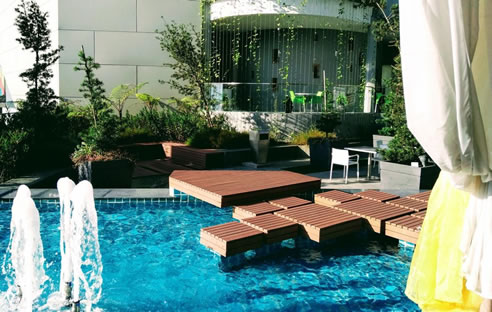Sustainable Water Storage: Preparing for an Australian Water Crisis

Sustainable water storage and usage is a growing necessity in the Building and Construction industry in the face of a looming Australian Water Crisis. In 2015, the City of Perth came close to critically low levels of river inflows with 11.4 GigaLitres for the year. Meanwhile, the rapid population growth in other major Australian cities such as Sydney, Brisbane, Canberra and Melbourne contribute to lower water storage levels. A recent report from the United Nations mentioned the decline in water levels in Australia's Murray-Darling basin as an indicator of an imminent Global water crisis.
Combined with the decline in rainfall and the effects of climate change, the demand for sustainable water supply solutions in the built environment and construction sites is higher than ever.
Roads, buildings and essentially anything made in cement needs water. Water is essential for drilling operations, soakaway testing, hydro-demolition, vehicle cleaning and maintenance, grouting, wet trades, waste management, and more. People need water for drinking, sanitary and washing purposes, temporary accommodations, bathrooms, and pantries. Water is vital, and it's the industry's responsibility to store and consume water in smarter and more effective ways.
Smart Water Consumption
In 2018, Australian communications and tech giant Telstra announced the upgrade of water reading meters across major cities. Their smart water meters run using Narrowband Internet of Things (NB-IoT) which provides real-time data on consumption, water supply tracking and loss measurement. The collection and analysis of data is a push in the right direction although there are still sceptics and opposers who wish to see more research and tests done before rolling out the technology. The technology is something that the building and construction industry can adopt on a micro level.

Water Leak Sensors
Leaks are a wasteful use of water, and when water is scarce, it comes with a price. Building pools, fountains, and water features require water for testing and operation. To mitigate the risk of leakage, use smart leak sensors to detect moisture or water content within slabs located under pools. The sensors can provide notifications and alerts across devices in real time.
Sustainable Water Storage
On-site Smart Water Tanks are another way to control water usage during the day. New wireless powered water storage products out in the market can manage water usage, monitor tank levels or control pumps using a wireless keypad from as far as 2-4 kilometres or more depending on the product.
Innovation is born out of necessity. Finding sustainable water storage and management solutions is only one of the many issues facing the Australian Building and Design community in response to the Australian Water Crisis.
Find out more about sustainable building methodologies at the DesignBUILD Expo from 14-16 May, 2019 at the International Convention Centre in Sydney.

|





 DesignBUILD 2020 Postponed Until October
DesignBUILD 2020 Postponed Until October Planning your Kitchen Renovation:
Planning your Kitchen Renovation: DesignBUILD 2020: A Focus on the Latest
DesignBUILD 2020: A Focus on the Latest Prefabricated Construction at
Prefabricated Construction at Architectural Excellence with Interior
Architectural Excellence with Interior 3D FDM Printing: What are the Important
3D FDM Printing: What are the Important Insulated Buildings and Cooler Streets
Insulated Buildings and Cooler Streets How Construction Software is Changing
How Construction Software is Changing DesignBUILD 2019: Commercial Platform
DesignBUILD 2019: Commercial Platform Evolution of Smart Cities at DesignBUILD
Evolution of Smart Cities at DesignBUILD DesignBUILD 2019: Speaker Series
DesignBUILD 2019: Speaker Series What's on at DesignBUILD 2019?
What's on at DesignBUILD 2019? The Rise of Engineered Timber Buildings
The Rise of Engineered Timber Buildings Stay Relevant: How to Handle Rapid
Stay Relevant: How to Handle Rapid Trending Lower: Australian Building
Trending Lower: Australian Building Sustainable Architecture: How to Build a
Sustainable Architecture: How to Build a Innovative Building Ideas from the
Innovative Building Ideas from the Global Building and Construction
Global Building and Construction Key Drivers of Prefab and Smart Modular
Key Drivers of Prefab and Smart Modular 3D Printing Sustainable Construction
3D Printing Sustainable Construction
